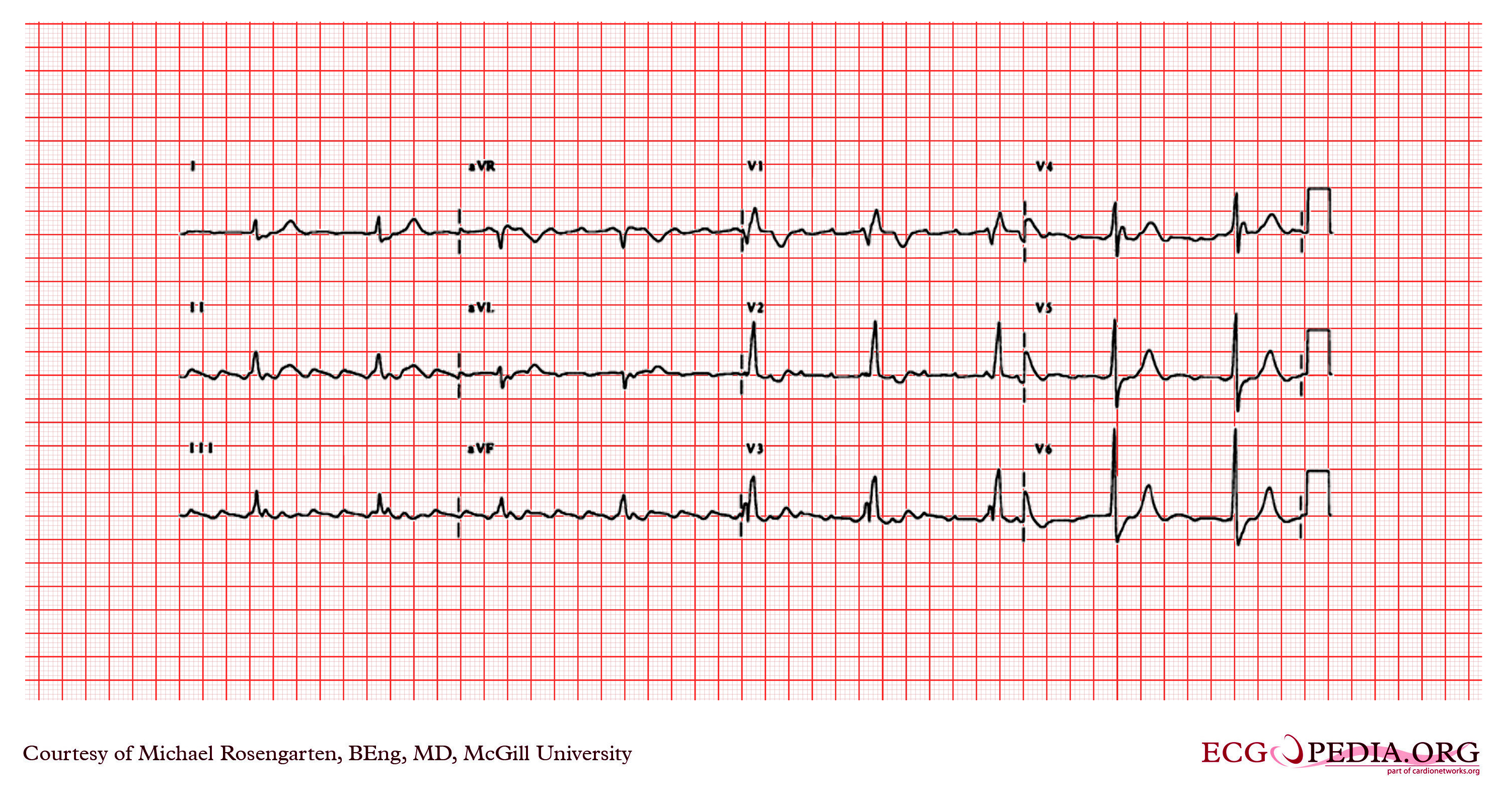Atrial flutter resident survival guide: Difference between revisions
| Line 23: | Line 23: | ||
== Management== | == Management== | ||
===Diagnostic Approach=== | |||
Shown below is an algorithm summarizing the initial approach to atrial fibrillation. | Shown below is an algorithm summarizing the initial approach to atrial fibrillation. | ||
| Line 81: | Line 82: | ||
{{familytree/end}} | {{familytree/end}} | ||
===Therapeutic Approach=== | |||
Shown below is an algorithm summarizing the approach to [[atrial flutter]].<ref name="circ.ahajournals.org">{{Cite web | last = | first = | title = ACC/AHA/ESC Guidelines for the Management of Patients With Supraventricular Arrhythmias—Executive Summary | url = http://circ.ahajournals.org/content/108/15/1871 | publisher = | date = | accessdate = 15 August 2013 }}</ref> | Shown below is an algorithm summarizing the approach to [[atrial flutter]].<ref name="circ.ahajournals.org">{{Cite web | last = | first = | title = ACC/AHA/ESC Guidelines for the Management of Patients With Supraventricular Arrhythmias—Executive Summary | url = http://circ.ahajournals.org/content/108/15/1871 | publisher = | date = | accessdate = 15 August 2013 }}</ref> | ||
{{familytree/start}} | {{familytree/start}} | ||
Revision as of 16:20, 10 March 2014
Editor-In-Chief: C. Michael Gibson, M.S., M.D. [1]; Associate Editor(s)-in-Chief: Hilda Mahmoudi M.D., M.P.H.[2]; Priyamvada Singh, M.D. [3]
Definition
Atrial flutter is a reenterant arrhythmia, with atrial rates between 240 and 340/min, with a regular ventricular response and a saw tooth pattern on EKG.
Causes
Life Threatening Causes
Life-threatening causes include conditions which may result in death or permanent disability within 24 hours if left untreated. Atrial flutter can be a life-threatening condition and must be treated as such irrespective of the causes.
Common Causes
- Acute coronary syndromes
- Cardiomyopathy
- Carbon monoxide poisoning
- Congenital heart disease
- Hypertensive heart disease
- Hyperthyroidism
- Mitral valve disease[1] [2]
- Pulmonary embolism
- Myocardial infarction
Management
Diagnostic Approach
Shown below is an algorithm summarizing the initial approach to atrial fibrillation.
Characterize the symptoms:
Characterize the timing of the symptoms:
❑ Duration
| |||||||||||||||||||||||||||||||||||
Identify possible triggers:
| |||||||||||||||||||||||||||||||||||
❑ Examine the patient ❑ Order an ECG ♦ Atrial flutter rhythm
| |||||||||||||||||||||||||||||||||||
❑ Order a transthoracic echocardiogram | |||||||||||||||||||||||||||||||||||
Therapeutic Approach
Shown below is an algorithm summarizing the approach to atrial flutter.[3]
| Atrial flutter | |||||||||||||||||||||||||||||||||||||||||||||||||||||||||||||||||
| Unstable | Stable | ||||||||||||||||||||||||||||||||||||||||||||||||||||||||||||||||
| CHF, shock, acute MI | Rate control: AV-nodal blockers | Conversion DC cardioversion Atrial pacing Pharmacological conversion | |||||||||||||||||||||||||||||||||||||||||||||||||||||||||||||||
| DC cardioversion | |||||||||||||||||||||||||||||||||||||||||||||||||||||||||||||||||
| If therapy for prevention of recurrences warranted | |||||||||||||||||||||||||||||||||||||||||||||||||||||||||||||||||
| Antiarrhythmic drugs | Catheter ablation | ||||||||||||||||||||||||||||||||||||||||||||||||||||||||||||||||
Management of atrial flutter depending on hemodynamic stability.
Attempts to electively revert atrial flutter to sinus rhythm should be preceded and followed by anticoagulant precautions, as
per AF.
AV indicates atrioventricular; DC, direct current.
Algorithm based on the 2003 ACC/AHA/ESC guidelines for the management of supraventricular arrhythmias.[3]
Do's
- It is often the result of pulmonary disease exacerbation, pericarditis, and open heart surgery
- Radiofrequency catheter ablation is superior to medical therapy.
Anticoagulation for atrial flutter
- CHADS2 score
- Congestive heart failure - 1
- Hypertension -1
- Age > 75 -1
- Diabetes Mellitus -1
- Stroke or TIA - 2
- Score > 2 anticoagulate
- Score < 2 Aspirin may be sufficient
- CHA2DS2 VASc score
- Congestive heart failure - 1
- Hypertension -1
- Age > 75 - 2
- Diabetes Mellitus -1
- Stroke or TIA - 2
- Vascular disease - 1
- Age - 65 -74
- Sex - Female
- Score 0 low risk, no anticoagulation or aspirin 81-324
- Score 1, moderate risk, oral anticoagulation or Aspirin
- Score 2 or more, oral anticoagulation
Don'ts
References
- ↑ Gutierrez SD, Earing MG, Singh AK, Tweddell JS, Bartz PJ (2012). "Atrial Tachyarrhythmias and the Cox-maze Procedure in Congenital Heart Disease". Congenit Heart Dis. doi:10.1111/chd.12031. PMID 23280242. Unknown parameter
|month=ignored (help) - ↑ Granada, J.; Uribe, W.; Chyou, PH.; Maassen, K.; Vierkant, R.; Smith, PN.; Hayes, J.; Eaker, E.; Vidaillet, H. (2000). "Incidence and predictors of atrial flutter in the general population". J Am Coll Cardiol. 36 (7): 2242–6. PMID 11127467. Unknown parameter
|month=ignored (help) - ↑ 3.0 3.1 "ACC/AHA/ESC Guidelines for the Management of Patients With Supraventricular Arrhythmias—Executive Summary". Retrieved 15 August 2013.
